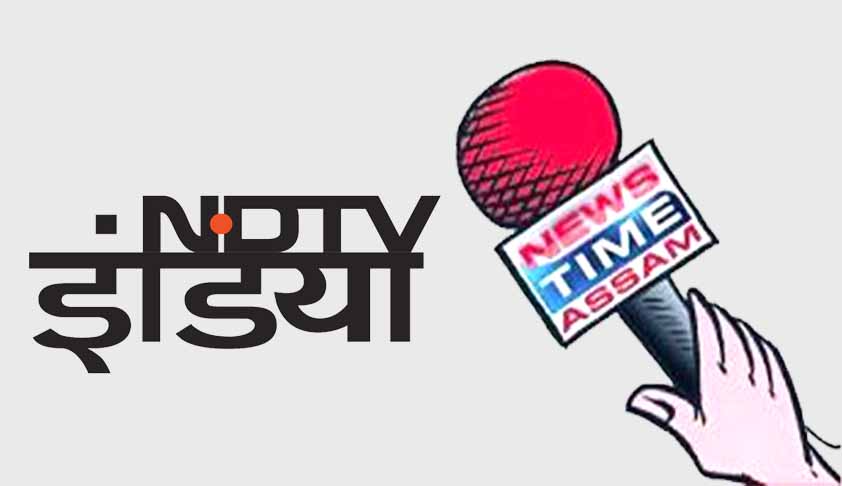Is There A Regulatory Vacuum At The Helm Of Television Content Regulation?
Arjun Natarajan
7 Nov 2016 4:42 AM
In relation to the imposition of a penalty of prohibition of transmission/re-transmission of NDTV India channel on any platform throughout the territory of India, for a period of 1 day, would this question be posed? In the event that it is posed, would the question be answered in the negative? If that be so, would it have the effect of rendering the prohibition order bad in law? This piece...
In relation to the imposition of a penalty of prohibition of transmission/re-transmission of NDTV India channel on any platform throughout the territory of India, for a period of 1 day, would this question be posed? In the event that it is posed, would the question be answered in the negative? If that be so, would it have the effect of rendering the prohibition order bad in law?
This piece is not about the imposition of a penalty of prohibition of transmission/re-transmission of NDTV India channel on any platform throughout the territory of India, for a period of 1 day. This short piece shall briefly touch upon something, which Ministry of Information & Broadcasting (“MIB”) copiously refers to in the prohibition order i.e., Policy Guidelines for Uplinking of Television Channels from India, 2011. Unfortunately, not much has been spoken or written about Policy Guidelines for Uplinking of Television Channels from India, 2011.
Before examining the aforesaid policy guidelines, it would be significant to examine a seeming anomaly. Usually, a law precedes the rules/regulations which are made under that law. At times,a law and the rules/regulations which are made under that law may be contemporaneous. In any case, it is very rare for rules/regulations to precede the law, under which they are purportedly made.
An example of such a rare scenario is The Cable Television Networks (Regulation) Act, 1995 (“Cable Act”) and The Cable Television Networks Rules, 1994 (“Cable Rules”).It is obvious that Cable Rules of the year 1994 were not made under Cable Act of the year 1995. In fact, Cable Rules were made in the year 1994 under an ordinance called Cable Television Networks (Regulation) Ordinance, 1994 (“Ordinance”). Hence, Cable Rules are of the year 1994.
Subsequently, Ordinance was replaced by Cable Act of the year 1995.
Cable Rules came into force on 29.09.1994, whereas, Cable Act came into picture only on 25.03.1995, as much as it is deemed to have retrospectively come into force on 29.09.1994.
Coming back to the policy guidelines. MIB has prescribed policy guidelines for uplinking and downlinking of satellite TV channels in India. Policy Guidelines for Downlinking of Television Channels (“Policy Guidelines for Downlinking”) and Policy Guidelines for Uplinking of Television Channels from India (“Policy Guidelines for Uplinking”), which are effective as on date, are of 05.12.2011.
Before uplinking signals of a TV channel, a broadcaster is required to obtain an uplinking permission from MIB for that TV channel. A broadcaster which wants to distribute its satellite TV channels is required to obtain downlinking permission for those TV channels from MIB.
It would not be out of place to mention that Rule 10 of Cable Rules prescribes that every broadcaster, multi-system operator and cable operator shall comply with the regulations, guidelines and orders as may be made or issued by Telecom Regulatory Authority of India (“TRAI”).
However, Policy Guidelines for Downlinking and Policy Guidelines for Uplinking have not been made or issued by TRAI. In fact, they were issued by MIB, before several years.
Pertinently, Ordinance did not envisage such Policy Guidelines for Downlinking and Policy Guidelines for Uplinking. Neither Cable Rules nor Cable Act envision the same.
The perturbing question is, do Policy Guidelines for Downlinking and Policy Guidelines for Uplinking have any legal force? The said question assumes all the more importance because these guidelines include provisions to control content.
If the answer to this question is in the negative, then, at the helm of television content regulation, there is a regulatory vacuum.
In relation to the imposition of a penalty of prohibition of transmission/re-transmission of NDTV India channel on any platform throughout the territory of India, for a period of 1 day, would this question be posed? In the event that it is posed, would the question be answered in the negative? If that be so, would it have the effect of rendering the prohibition order bad in law?
I had said that this piece is not about the imposition of penalty of a prohibition of transmission/re-transmission of NDTV India channel on any platform throughout the territory of India, for a period of 1 day. Hence, I would rather conclude on a futuristic note.
The overwhelming avalanche of debates and discussions which has ensued, thanks to NDTV India, should hopefully lead to the establishment of an independent content regulator, so that, Policy Guidelines for Downlinking and Policy Guidelines for Uplinking are replaced by well thought out regulations which clearly have the force of law and are administered as well as adjudicated by experts.
Arjun Natarajan is a commercial litigator with focus on the broadcasting sector.
[The opinions expressed in this article are the personal opinions of the author. The facts and opinions appearing in the article do not reflect the views of LiveLaw and LiveLaw does not assume any responsibility or liability for the same].
This article has been made possible because of financial support from Independent and Public-Spirited Media Foundation.

